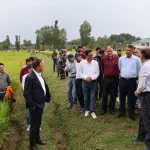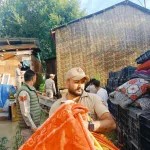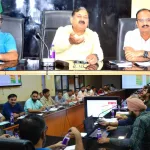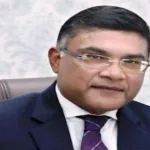The COVID-19 pandemic, though posed a huge health challenge in the entire world — has significantly highlighted the need to invest more in public health. Currently, the public expenditure on healthcare in India is just above 1.5 percent of the Gross Domestic Product (GDP) and we need to raise it to at least 3.5percent in the near term. We should remember that several developed countries already spend more than 10 percent of its GDP as public health expenditure.
India should be able to strengthen the three tier public healthcare system by adopting a strategy, with emphasis on pouring more resources into the primary healthcare centres. It is estimated that almost 90 percent of the medical treatment demand can be met at the primary healthcare level and very few patients need to be referred to higher centers of the healthcare ladder. Provided, proper health education and awareness, particularly regarding emerging common lifestyle diseases and infections is ensured at primary level of care.
I remember recently a doctor couple from J & K, who both got selected for PG medical courses, besides qualifying public service commission medical officer exams – decided to not join for PG courses, instead wanted to serve in a far flung remote area at a primary healthcare center (that was made operational after many years). The doctors though took a rare step, deserve applauds for deciding to serve people in remote area and strengthen the basic primary healthcare center. Having said that, the way out is to strengthen our primary healthcare set up and ensure a basic access of healthcare services to our entire population.
The United Nations High Level Political Declaration on Universal Health Coverage calls for accessible and equitable healthcare services to every single person and advocates greater emphasis on primary healthcare. Primary healthcare must be improved – starting with sub-centres, the first health post for the community. By staffing them with well-trained non-physician health care providers, both facility-based and outreach services can be provided without being doctor dependent. Sub- district hospitals too should be strengthened to provide high quality secondary care, some elements of essential tertiary care and training to different categories of health care providers. This would also help in relieving unending crowds in tertiary care hospitals.
The next priority should be to improve the size and quality of our health workforce. Without this, the promise of achieving Universal Health Coverage will remain an empty entitlement. Since primary health care is our first priority, resources must be devoted to the production of competent and committed community health workers for the frontline, mid-level health workers or AYUSH doctors for the sub-centres, and general and specialist nurses as well as non-specialist doctors for primary health centres.
More specialists are needed for higher levels of health care including the district hospitals. New nursing and medical colleges should be preferentially set up in districts which presently have very few, linking them to tertiary-care hospitals. It is indeed a matter of satisfaction that new medical colleges at district level are being set up by government. However more needs to be done to ensure adequate staff recruitment, strengthen all specialties, build infrastructure to ensure facilities, strengthen the emergency cure and improve patient care and management in the newly set medical colleges.Public health competencies must be increased through inter-disciplinary education which is aligned to health system needs. Improved management of all of these human resources must involve better incentives for recruitment and retention, cadre review and creation of well defined career tracks.
Another focus should be to provide essential medicines and diagnostics free of cost at all public facilities. At the same time, referral linkages and patient transport services should be improved to integrate primary, secondary and tertiary health care in the public system. Difficult to reach areas and vulnerable population groups should receive special attention, even as the principle of universality must be applied while designing health services. Regulatory systems need strengthening from hospital accreditation to health professional education and from drug licensing to mandatory adoption of standard management guidelines for diagnosis and treatment of different disease conditions at each level of health care.
A district wise inter-operable Health Information Network is needed to improve governance, accountability, portability, storage of health records and management. Moreover, community participation must be supported to actively engage people in the design, delivery, monitoring and evaluation of health programmes. Finally, larger healthcare investments and budget allocation should also be made in health promoting programmes in other sectors such as water, sanitation, nutrition, environment, urban design and livelihood generation.
(Author is a medical doctor, public speaker and columnist. He can be reached on: [email protected])





